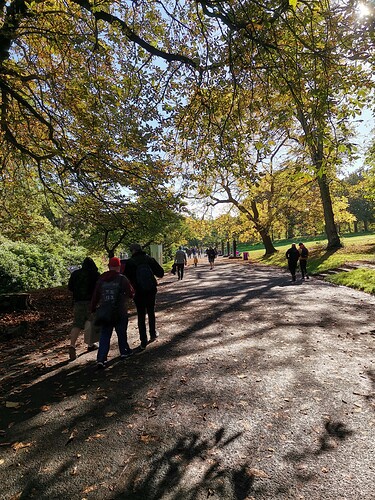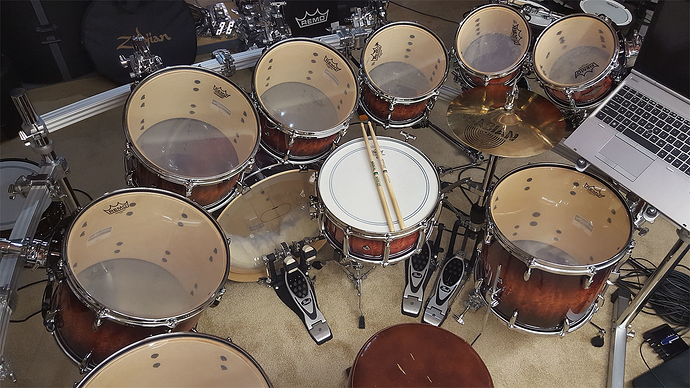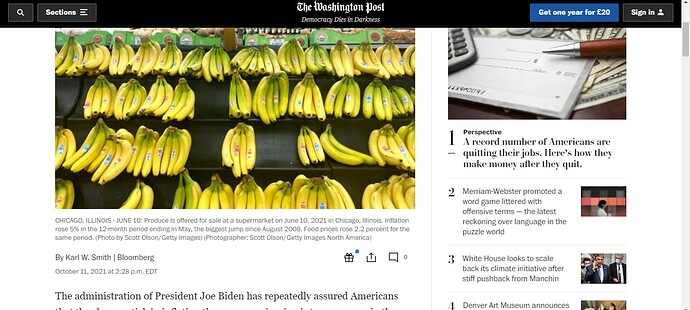Did I wait TOO LONG to stock up on those last couple of mods ?
The Dodgers. I freaking hate those guys…
People still play pokemon go there?
Yes. It’s a weekend event, so means the park is a mess for a week.
 so so over the lockdowns
so so over the lockdowns 
We only moved to Victoria in April this year, the majority of the time in lockdown and restricted travel back to South Australia.
I am grateful for the freedom we had last year in South Australia and for the freedom we may soon have with vax rates getting close to target 80% double vax 
…who will be pissed at the single vaxxers who will blame all of the world’s problems on the non-vaxxers who will hate the anti-vaxxers…Yup, we are in a pickle…Divide et impera
The ONLY thing I hate more than changing 10 heads, is changing 20 heads !!!
Please notice, this is a pic of BRAND NEW heads, hehe…
Pain and suffering await …
By Karl W. Smith | Bloomberg
October 11, 2021 at 2:28 p.m. EDT
The administration of President Joe Biden has repeatedly assured Americans that the sharp uptick in inflation they are experiencing is temporary — in the language of economists, transitory. Surveys suggest that public is less than convinced, but consumer expectations of inflation are notoriously fickle.(1)
All of this has economists and central bankers dutifully poring over data for signs of when or whether inflation, currently just under 4%, will drift back toward the Federal Reserve’s target of 2%. Instead, they should be considering a more fundamental question: whether the Fed should strive to make 4% inflation permanent.
To be clear, there is no doubt that the recent rise in price growth has been an unpleasant shock. That’s partly because it is so uneven. Prices on commodities such as gasoline and lumber, along with a few select goods such as used cars, have risen by double-digit rates.
A sharp increase in the price of even a small set of products creates far more pain than a rise the overall rate of inflation, which is averaged across thousands of products. But narrow inflation is also the type of inflation that’s most likely to reverse itself, since it reflects supply-chain disruptions that will eventually be relieved.
Analysts are concerned that the rise in inflation may be persistent because they see hints of a broader, gentler rise in prices across a range of goods — and, crucially, in the wages of the workers who produce those products.
This increase in both wages and prices can lead to the dreaded wage-price spiral. Yet because it is shared by both households and businesses, the pain is muted. Indeed, a higher rate of inflation, and correspondingly higher wage growth, could be a net positive for the economy.
There are two main reasons. The first is debt dynamics. Higher rates of inflation make debt more expensive, but easier to manage.
A permanent increase in inflation from 2% (its average over the last decade) to 4% would cause interest rates to rise by roughly 2% as well, as lenders sought to protect themselves from rising prices. Economists describe this as a rise in nominal rates, because the net return from lending — the real interest rate after accounting for inflation — remains the same.
One way to see how this would play out is to consider the mortgage market. Higher nominal interest rates would mean a higher monthly payment for any given loan. That might seem to make houses even less affordable. But what’s been clear over the last two decades — and what economic theory predicts — is that housing prices in the most desirable urban areas are determined by the maximum mortgage an affluent urban family can afford.
Buyers in those markets bid against each other for a relatively fixed stock of housing. Over the last decade, as nominal interest rates fell, families could afford to take out larger mortgages, and so maximum bids rose. Overall, buyers ended up with roughly the same monthly payment.
Yet wage growth was also slow over the last decade. So those same families haven’t seen their mortgage payments decline as a fraction of their income at the same rates as previous generations did. They have less room to manage unforeseen expenses, making their financial future more uncertain.
Modest increases in inflation and wages would reverse this whole process — that is, they would decrease mortgage sizes and maximum bids, thereby slowing the rise in home prices. Meanwhile rising wages would make those mortgages more affordable over time.
The second reason to support higher inflation, and the resulting higher nominal interest rates, has less to do with homeowners than with Federal Reserve Chairman Jerome Powell. Higher interest rates would give the Fed more room cut interest rates in case of a downturn. When Covid struck, the nominal interest rate the Fed controls was only 2%. That gave it very little room to stimulate the economy. Fortunately, in part because of the unusual nature of the recession, Congress did.
The next recession, hopefully, will not be the result of a global pandemic. That means Congress is unlikely to provide the same level of support, and the Fed will have to do more to stimulate the economy. To do that, it needs higher nominal interest rates.
Inflation — particularly when caused by sharp increases in a few products — is politically unpopular. A modest sustained increase in prices and wages, however, would create a more stable U.S. economy by improving debt dynamics and giving the Fed more flexibility. In an uncertain world, those two advantages make higher inflation more than worth it.
I found that the original link worked fine without having to login.
I think you have a limit to see some articles before registering …
That’s possible. I usually use Edge for academic logins etc. So rarely head to the Washington Post on Brave.
It does get odd at times, especially when YouTube horror reviews have to blur out nipples which are under opaque clothing.
Wow, wonder when school field trips to art museums will be banned.
When I was a kid we got trips to France and we did our best to hide the drink, airguns, knives, fireworks and porn we purchased.
I hate it when my shipping containers are held out, still anchored WAITING to get to port, and WE, the unsuspecting consumers are handed a load of BS, as to why. COVID, weather, “Surge in Consumer Buying”, and the like.
I’ve had the LUXURY of talking to a friend who drives in CA (Cali, not Canada), and he said, it’s ALL BS.
Welcome to the PAINFUL village, … of the real.
The trucking issue with California LA ports, ie the Port of Los Angeles (POLA) and the Port of Long Beach (POLB), is that all semi tractors have to be current with new California emissions standards. As a consequence, that mean trucks cannot be older than 3 years if they are to pick up or deliver containers at those ports. This issue wipes out approximately half of the fleet trucks used to move containers in/out of the port. Operating the port 24/7 will not cure the issue, because all it does is pile up more containers that sit idle as they await a limited number of trucks to pick them up.
Read that again …
This issue wipes out approximately half of the fleet trucks used to move containers in/out of the port. Operating the port 24/7 will not cure the issue, because all it does is pile up more containers that sit idle as they await a limited number of trucks to pick them up.
LOL, don’t worry, the EPA will fix it, they fix EVERYTHING…
Hey, why don’t we let the ships travel to OTHER PORTS ?? I say send them over to the EAST COAST, and WE’LL take delivery of the goods, and then Cali can wait for THEIRS to arrive, when we’re GOOD and ready.
OR, maybe that’s too scary for you, and you’d prefer an ALTERNATE explanation. I’ve found that for you too !!
The cause of the backup, say port officials, is strictly-enforced Covid restrictions at the ports, including those in Asia, as well as unprecedented demand for goods from China, South Korea, and other Asian exporting countries.
Thanks Cali, you’ve gone from wrecking your OWN state, and started trying to SHARE it with the REST of the country.
Don’t blame all of us! I’ve had the displeasure of getting bent over by CA Air Recource Board(CARB) more than a time or two.
They suck. A LOT.
While I understand that our current reliance on fossil fuels is not doing a damn thing to help the environment, if we don’t have viable alternatives to transport, everything comes screeching to a halt.
Or float.
So, do we relax the regs to get the ports cleared? Get cleaner burning trucks built with the state picking up the tab for the replacements? I don’t know. I’d like to think that there are smarter people than I working towards a solution. But given that this is the same state that wasted 13 billion dollars trying to “end homelessness” without any meaningful reforms, I’m not going to hold my breath






